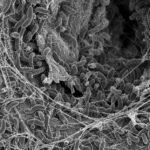
L’absence de queue chez l’humain et les grands singes constitue une des évolutions anatomiques les plus intrigantes. La majorité des mammifères arbore une queue fonctionnelle mais les hominoïdes (humains, gorilles, chimpanzés, etc.) ne possèdent qu’un vestige : le coccyx. Cette particularité…










